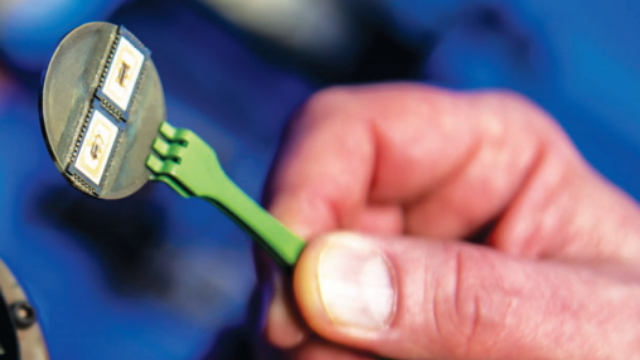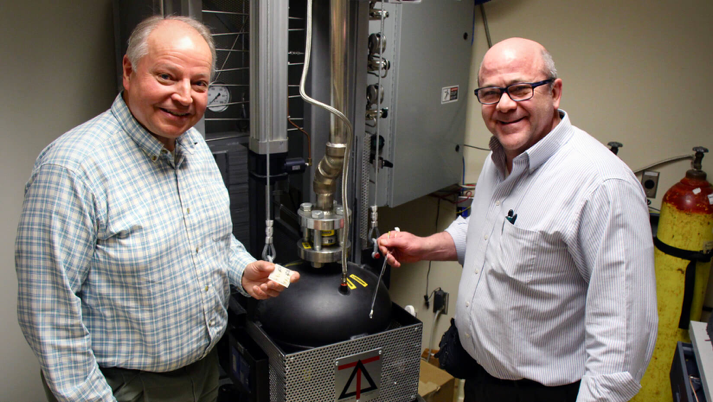
DoE EPSCoR Implementation Grant Invited to Submit Phase 2 Proposal
Project Title: DOE EPSCoR Implementation Grant: Harsh Environment Materials and Fabrication Techniques for Wireless Sensor Applications
PI: Mauricio Pereira da Cunha
Co-PI: Robert Lad
Research Associate: Luke Doucette
Original Award Amount: $750,000
Award Dates: September 2019 – September 2021

Dr. Mauricio Pereira da Cunha and Dr. Robert Lad have worked to change the face of harsh environment materials research and fabrication techniques in regard to cutting-edge wireless sensor applications. The success of their most recent award, a Department of Energy (DoE) EPSCoR Implementation Grant, has led to them being invited to submit a Phase 2 proposal for additional funding.
The overall goal? To create a wireless nano-technology that is able to withstand extreme temperatures up to 1000°C (1800°F) and over 50,000 times the force of gravity on earth, while being packaged in a way that protects the performance of the device, and tiny enough to place on small components; down to 1 mm by 2 mm, which is roughly the size of a grain of rice. This technology is meant to effectively monitor temperatures and strain imposed on the materials utilized in harsh environments (i.e. gas turbine engines or power plants).
“Temperature and strain have to be monitored in order to properly design parts aimed to operate in high-temperature, harsh environments, or predict and detect damage or malfunctions,” Pereira da Cunha says. “The ability to do so remotely, thanks to wireless technology, has a lot of advantages. It can be placed on moving parts, like a rotating blade in a gas or steam turbine, or a moving part on a belt furnace of a production line or process, for example.”
Prototypes of this technology have already been placed at the University of Maine Steam Plant, the Penobscot Energy Recovery Center, and Longview Power Plant in West Virginia, and tested in gas turbine engines from General Electric and Rolls Royce. At these types of facilities and applications, the wireless sensor technology not only improves safety and lowers maintenance costs, but also helps their operators run systems and engines more efficiently, thus reducing fuel usage and the emission of polluting gases. This is achieved through the sensors’ ability to provide real-time data for parameters such as temperature, strain, pressure, corrosion and gas concentration.
The applications for this type of technology far exceed power plants and turbine engines. This nano-technology could easily be applied to ceramic, steel and other metal production, space exploration, oil exploration, the transportation industry, complex engine systems, and other advanced manufacturing processes that involve extreme conditions that will benefit from the ongoing and future scientific and technological advances made at the University of Maine.
“We are now looking into expanding our project by looking closely at different materials for use in the packaging of these sensors,” Pereira da Cunha explains. “How can we effectively package these sensors so they can withstand these high temperatures or utilize energy scavenging to the best of our ability? These are the types of questions we get to address moving forward.”
